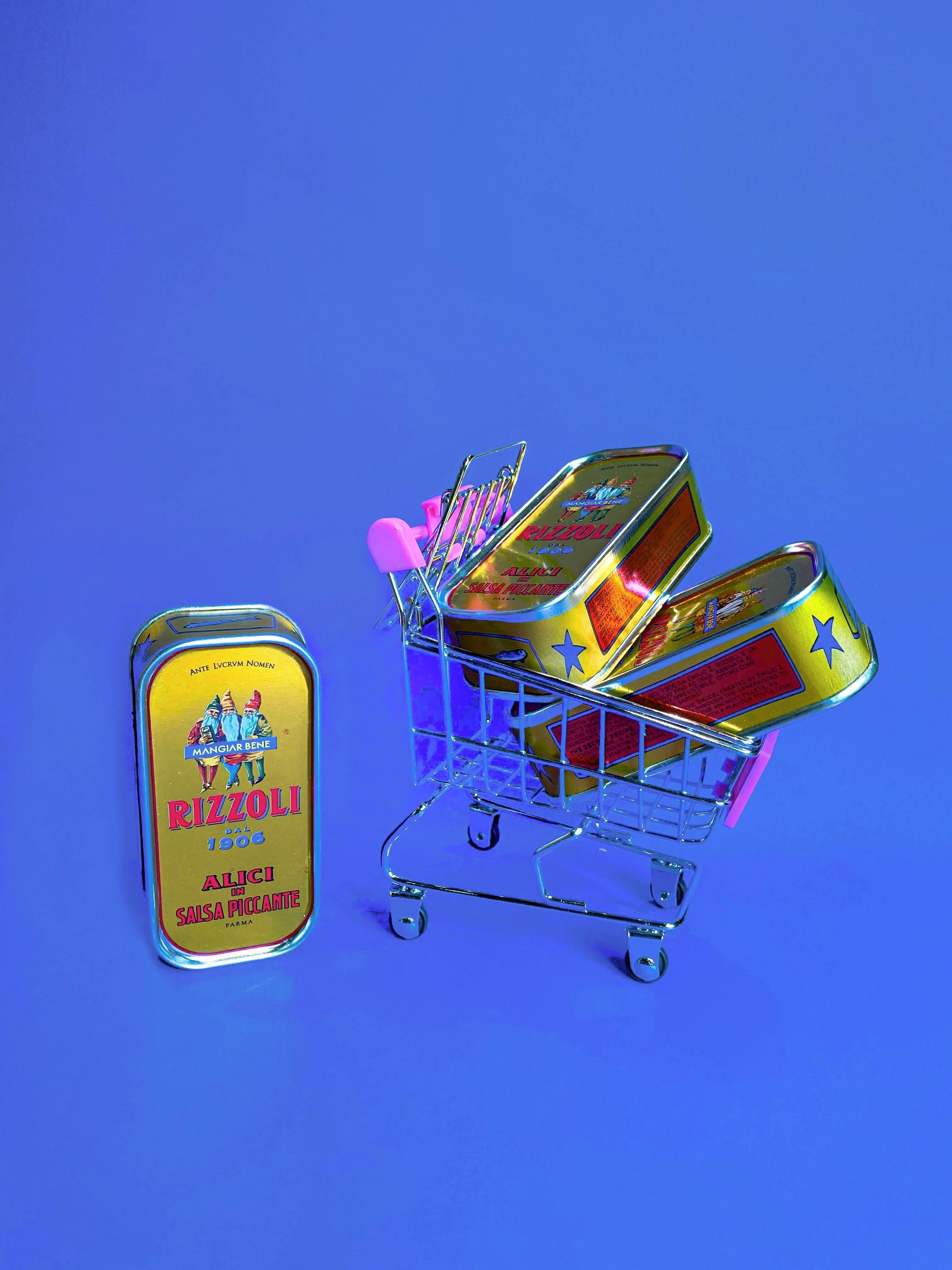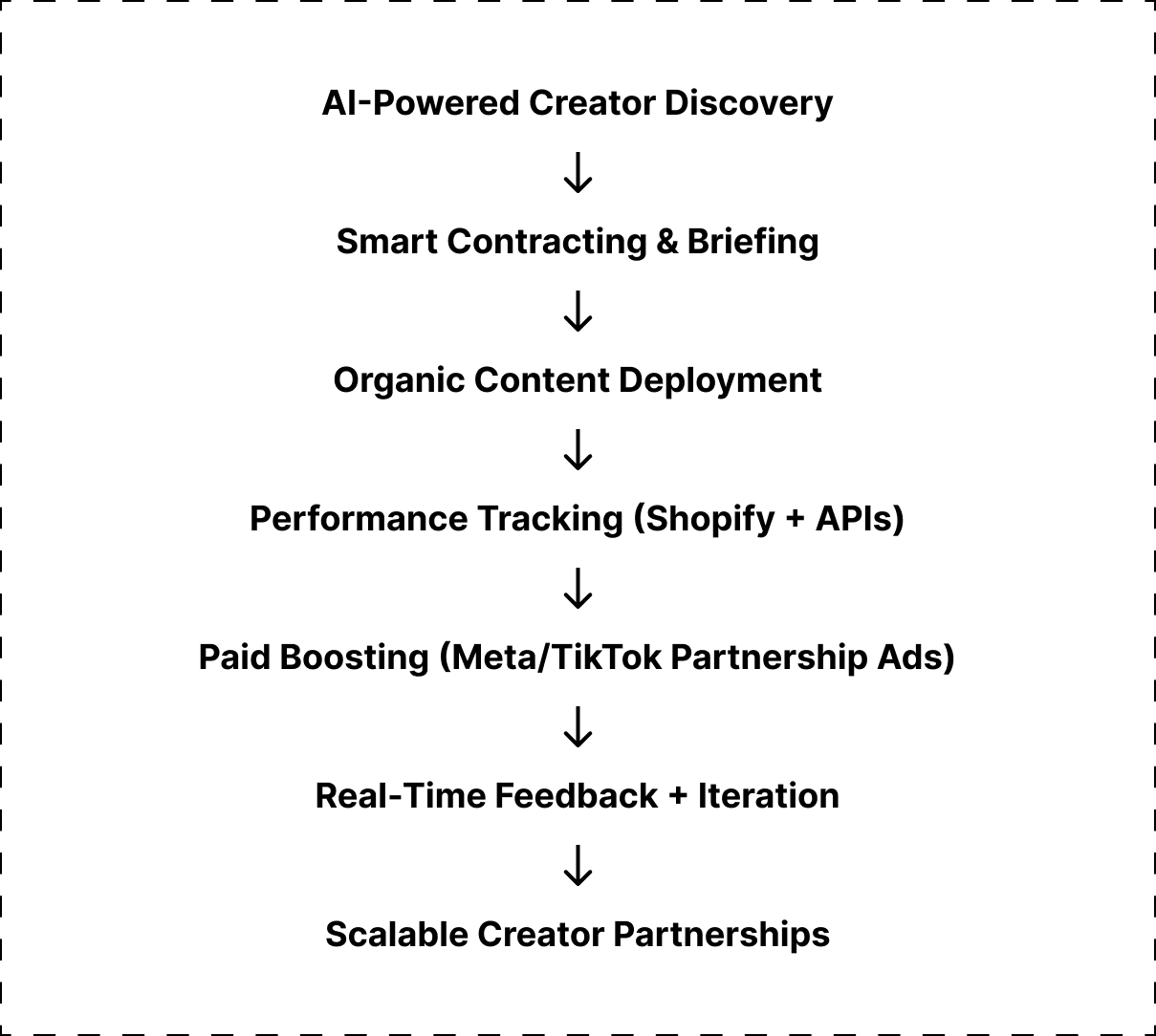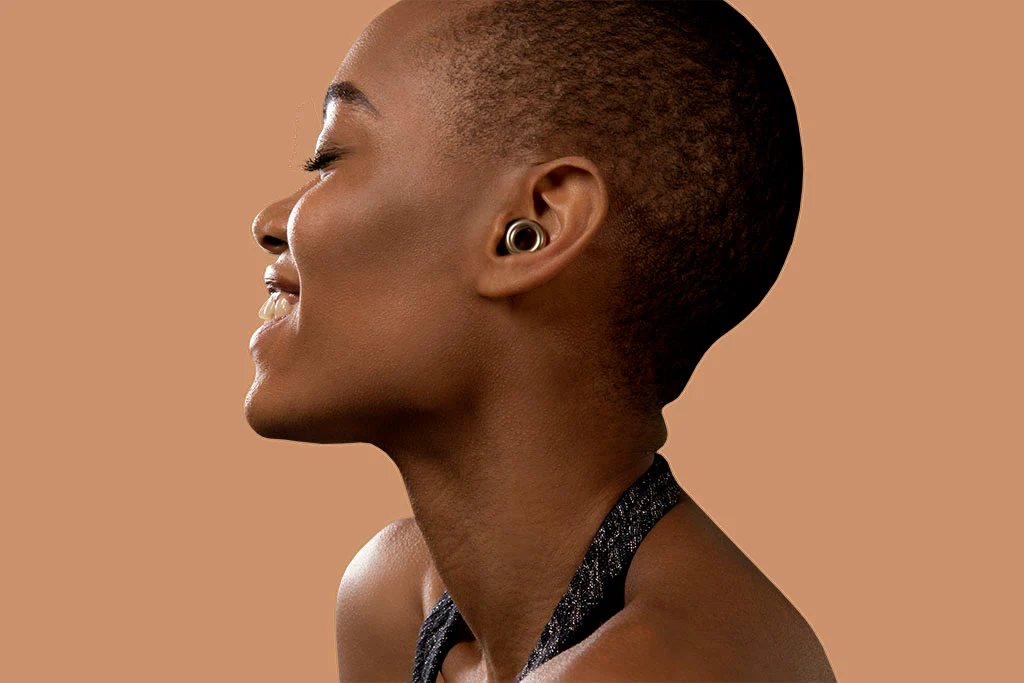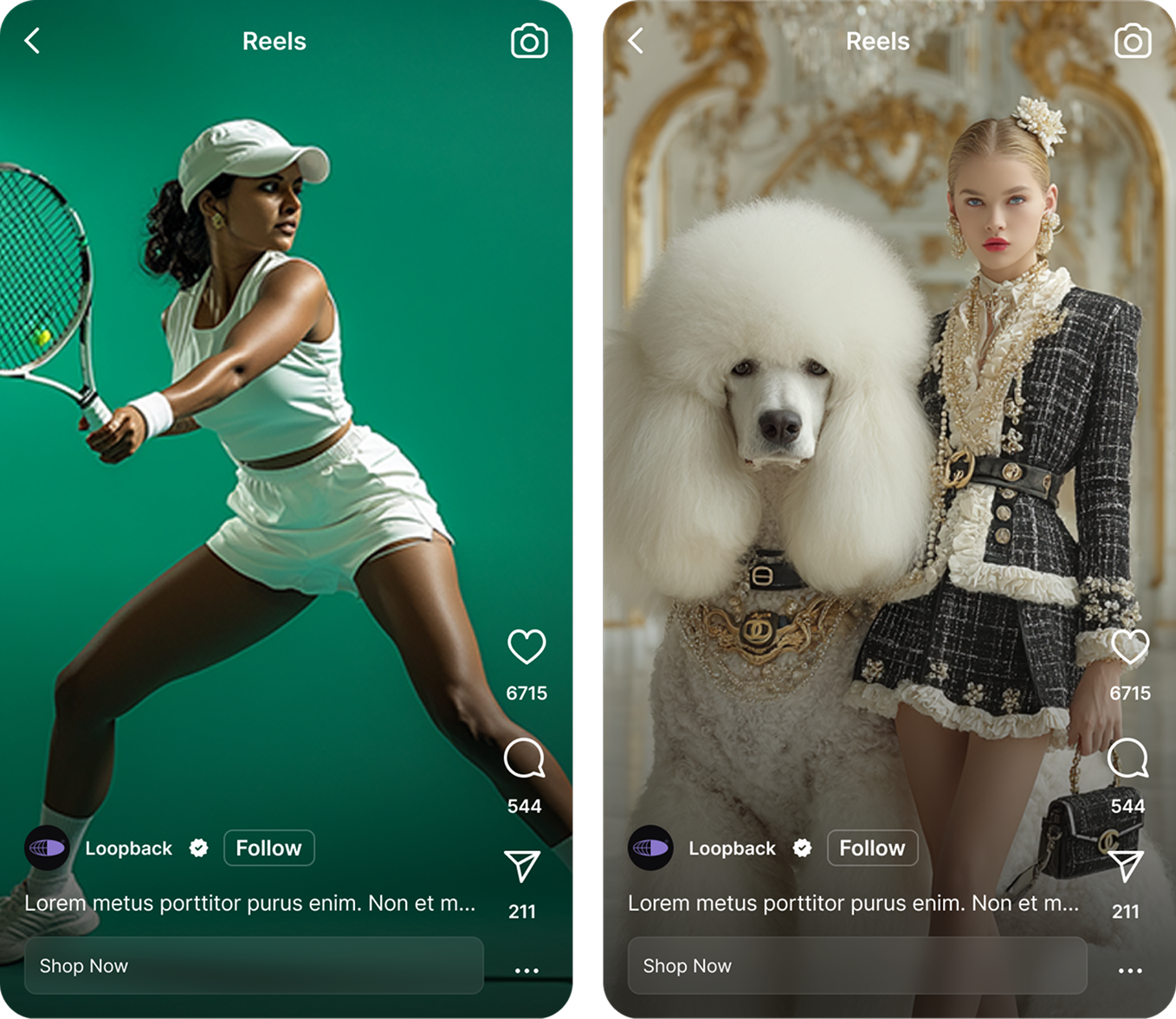The Influencer Tech Stack for DTC Brands in 2025

DTC’s New Growth Engine Isn’t a Tool. It’s a Stack.
Let’s get one thing straight: influencer marketing didn’t “become” performance. The Cirqle made it performance.
While most brands were chasing likes, gifting product, and crossing their fingers for reach, we were quietly building the infrastructure to turn creators into measurable, scalable revenue channels. Not for one-off launches, but for always-on acquisition, retention, and reactivation. And yet, in 2025, most influencer programs still operate like it’s 2018. Campaigns are duct-taped together with spreadsheets, Slack threads, PDFs, and DMs. Teams waste hours managing creators manually, all while reporting on impressions like it means something to their bottom line.
Here’s the uncomfortable truth: Collabs don’t scale. Systems do. And that system, the one driving the most efficient growth for modern DTC brands, is a performance-first influencer tech stack.
The best marketing teams aren’t guessing which creators will work. They’re using first-party data to predict RoAS before a single post goes live. They’re not briefing in Google Docs. They’re deploying structured, AI-generated briefs with media buying baked in. They’re not just running one campaign, they’re running dozens, simultaneously, across markets and lifecycle stages, all inside a unified platform. We’ve seen this shift firsthand. We’ve helped 1,000+ marketers, from fast-scaling DTC teams to global giants like Crocs, move from chaotic creator marketing to fully automated, ROI-optimized systems. Brands like Loop Earplugs, Secret Sales, and Lyma Life aren’t just working with influencers, they’re turning them into performance assets across paid and organic, upper funnel and post-purchase.
This post is your blueprint.
We’ll break down the 2025 Influencer Tech Stack: the essential components, the tools worth retiring, and the strategies that separate the DTC brands stuck in creator chaos from those printing cash with influencer-led growth.
The Old Stack vs. The 2025 Stack
The Non-Negotiables: 5 Core Pillars of the 2025 Stack
The DTC brands winning with creators in 2025 aren’t “doing influencer marketing” , they’re running performance machines. At the center of those machines are five core capabilities that drive profitable growth at scale. If your stack is missing any of these, you're leaving efficiency, revenue, and strategic advantage on the table.
1. Creator Discovery Built on First-Party Signals
Let’s be blunt: if you’re still choosing creators based on engagement rates and follower counts, you’re gambling , not growing.
Most discovery tools on the market still operate like influencer marketing is a PR stunt. They scrape public data, rank creators by vanity metrics, and call it targeting. That doesn’t cut it anymore.
In 2025, creator discovery isn’t about who looks right. It’s about who sells.
A modern discovery engine must include:
- RoAS predictions based on historical first-party sales data
- Category + audience overlap detection to match creators to your ideal buyer
- Shopify-integrated conversion data to measure what matters: revenue
Case in point: When Lookfantastic transitioned to The Cirqle’s RoAS-first discovery model, they stopped guessing and started converting. By targeting creators with actual purchase-driving performance, not just aesthetic appeal, they reduced CAC by 38% compared to Meta prospecting audiences.
Why it matters: The creator who looks good on paper and the one who moves product are rarely the same. First-party signal ≠ follower count.
2. AI-Generated Briefs and Structured Onboarding
A vague brief kills performance. Period.
Yet most brands still send creators walls of text, disconnected from any media goals. Others swing the opposite direction , two-line briefs with “just be yourself” as the strategy. Both approaches fail.
In 2025, the brief isn’t a document. It’s a precision-built media plan.
What winning briefs look like:
- SKU-level product insights to highlight USPs that actually convert
- Dynamic creative references , pulled from your top-performing content, not guesswork
- Clear compliance guardrails like safe zones, usage terms, and ad-readiness checkpoints
And the best part? It’s all auto-generated inside the platform, tailored to the creator’s vertical, voice, and audience , in minutes, not meetings.
🔗 Read more: Automated Influencer Campaigns: From Chaos to Control
Why it matters: If you don’t systematize the creative process, you can’t scale it , and you can’t learn from it. Structured briefs = structured outcomes.
3. Integrated Contracting, Licensing, and Usage Rights
Legal delays and rights issues kill campaign velocity.
If your legal or ops team is still chasing down signatures, manually negotiating rates, or sending last-minute licensing amendments, your stack is a liability, not a growth lever.
What high-performing teams do instead:
- Negotiate creator rates directly in-platform , no emails, no PDFs, no back-and-forth
- Automate usage rights at scale , pre-set terms for 90, 180, or 365 days baked into every agreement
- Toggle on ad licensing with a click , so top-performing content can be amplified instantly across paid
The result? More speed, more compliance, and more control , all without legal bloat.
Why it matters: Operational friction kills momentum. The faster your stack handles rights and rates, the faster your campaigns scale.
4. Full-Funnel Performance Tracking (That Actually Ties to Revenue)
The “influencer X got 10,000 saves” era is over. Performance marketers want one thing: revenue clarity. They want to know exactly which creators, posts, hooks, and formats are driving sales , and which aren’t. If your stack can’t show that in real time, you're flying blind.
Your tracking infrastructure must include:
- Shopify + Meta/TikTok API integrations for real revenue attribution
- Multi-touch tracking across organic content, paid boosting, and post-click behavior
- Content-level performance data , so you don’t just know who worked, but what worked
Real example: Loop Earplugs used The Cirqle to track content performance down to individual video hooks , discovering that certain CTAs outperformed others by 4x. This insight allowed them to cut wasted media spend by 22%, and reinvest in content that actually converted.
Why it matters: RoAS is your north star. If you can’t tie creator content to sales, you’re not running performance , you’re running vibes.
5. Built-In Paid Amplification Across Meta + TikTok
The highest-leverage influencer campaigns don’t stop at organic.
They start with organic , and scale through paid.
In 2025, the most valuable creator content isn’t what hits the feed. It’s what gets boosted, targeted, and optimized like paid media.
A modern stack enables:
- Spark Ads and Meta Partnership Ads activated natively inside the influencer platform;
- Seamless permissions workflow , no back-and-forth approvals or whitelisting headaches;
- Budget routing based on real-time RoAS , so you only spend behind what’s already working.
🔗 More on this: From Organic to Paid , Turning UGC Into Creator Ads
Why it matters: The creator post is just the beginning. Performance comes when you amplify the winners , and kill the losers , fast.
Bonus: Slack + AI for Real-Time Campaign Ops
Dashboards are dead weight if no one’s watching them. In 2025, the best influencer teams don’t operate in hindsight , they operate in real time. That’s why high-performance brands are integrating Slack and AI-powered alerts directly into their campaign stack. It’s not about more data. It’s about better timing.
Here’s what modern teams get notified about, automatically:
- When a creator’s content goes live
- When RoAS drops below a set threshold
- When a top-performing post qualifies for paid amplification
- When performance anomalies surface mid-campaign
- When AI recommends a new creator or creative variation to test
No need to refresh dashboards or wait for wrap-ups. The right people get the right insights at the right time , directly in Slack, where work actually happens.
🔗 See how it works: Slack Alerts for Creator Campaigns
Why it matters: In creator marketing, speed is leverage. When your stack spots the signal and delivers it to your team instantly, you don’t just run better campaigns , you make better decisions, faster.
The Most Common Stack Mistakes (And What to Fix)
Even brands with big budgets and talented teams fall into the same traps. Not because they’re lazy , but because the ecosystem evolved faster than their infrastructure. Here’s where most influencer marketing stacks break down in 2025, and what to do instead.
1. Too Many Disconnected Tools
Managing influencer campaigns across spreadsheets, Google Docs, Notion pages, email threads, and separate reporting dashboards isn’t scrappy , it’s risky.
The result? Data silos, operational drag, and costly errors that slow down decision-making.
Fix it: Use a centralized platform where creator discovery, contracting, briefing, approvals, tracking, and boosting all live in one place. If it’s not unified, it’s not scalable.
2. Tracking the Wrong Metrics
Impressions and reach don’t pay the bills. Yet most platforms still optimize for visibility, not outcomes.
The result? Teams celebrate viral content that doesn’t convert, while underfunding the creators and formats that actually drive revenue.
Fix it: Shift your KPIs to CAC, ROAS, MER, and customer LTV. If you can’t track how each piece of content contributes to the funnel, your “influencer strategy” is just a brand play in disguise.
3. No Paid Social Integration
Organic content is the starting line , not the finish line. When you’re not boosting high-performing creator content via Spark Ads or Partnership Ads, you’re leaving scale (and sales) on the table.
The result? You hit a performance ceiling fast , and end up over-relying on cold paid media to fill the gap.
Fix it: Integrate your influencer tech directly with Meta and TikTok’s ad infrastructure. Creator content becomes your highest-converting media when it’s amplified intelligently.
4. Treating Creators Like One-Off Vendors
Creators aren’t assets to rent , they’re partners in your acquisition engine. If your stack only supports one-time collaborations, you're rebuilding your funnel from scratch every quarter.
The result? No compounding performance, no learning loops, and zero relationship equity.
Fix it: Build systems that support recurring partnerships, lifecycle-stage alignment (acquisition, reactivation, retention), and full-funnel measurement. The best influencer programs are always-on, not always-restarting.
The Solution: A Unified Operating System
To scale what works, you need more than “influencer software.” You need an operating system , built for performance teams , that connects every phase of your campaign lifecycle:
🔁 Discovery → Contracting → Briefing → Content → Attribution → Paid Amplification → Iteration
Let’s replace the chaos with compounding returns.
Fix it with a unified operating system that combines discovery, contracting, briefing, tracking, and amplification in one place.
The 2025 Influencer Stack, Visualized

What Top DTC Brands Get Right
The best DTC teams don’t just “do influencer marketing” , they’ve engineered it into a repeatable, scalable, and measurable performance engine. They understand that while great creators are essential, what really drives growth is the system behind the scenes.
Here’s how some of the most advanced brands in the space are operating differently, and what you can learn from them:
1. Secret Sales: Creators as Media Channels
Instead of treating influencers like brand accessories, Secret Sales treats them like paid media partners , complete with performance targets, licensing terms, and amplification budgets. Every campaign is optimized like a media buy, not a vibe check.
Result: A 38% lower CAC compared to Meta prospecting campaigns, driven by creator-led acquisition at scale.
.jpeg)
2. Lyma Life: Lifecycle-Based Campaign Mapping
Lyma doesn’t run random influencer bursts. They strategically align creator activations to specific customer lifecycle stages (acquisition, reactivation, retention) with tailored briefs and funnel-specific KPIs.
Result: Higher LTV and more efficient spend, with creators deployed precisely where they drive the most impact.

3. Loop Earplugs: Content-Level RoAS Optimization
Loop doesn’t just measure which creators worked. They measure which content hooks drove conversions. Using post-level RoAS, they double down on top-performing assets, and retire the rest.
Result: A 22% reduction in wasted media spend by only scaling what sells.

4. Crocs: Full-Funnel, Omnichannel Integration
Crocs embeds creators across its entire omnichannel ecosystem, from retail launches to TikTok paid, from e-comm to experiential. And they measure the impact not just on digital performance, but in-store lift and brand halo.
Result: Creator content becomes a core pillar of their global marketing mix, not an afterthought.
The Takeaway: Your Stack Is Your Strategy
In 2025, growth is won on efficiency, iteration, and data. Influencer marketing isn’t a creative channel. It’s a performance channel , and your tech stack is the engine.
If your influencer strategy still looks like:
- Google Sheets for tracking
- Instagram DMs for outreach
- PDF briefs and manual reporting
You’re running a Ferrari on gravel. It may roarrrr, but it’s not really moving at the pace you’d need it to be.
Ready to upgrade your stack?
👉 Book a demo of The Cirqle and see how DTC leaders are scaling RoAS with first-party data, performance integrations, and automation.
Or explore real results:
Get started with The Cirqle today.
Give your team the power and speed they need to find the right partners and grow your brand.
%201.avif)






